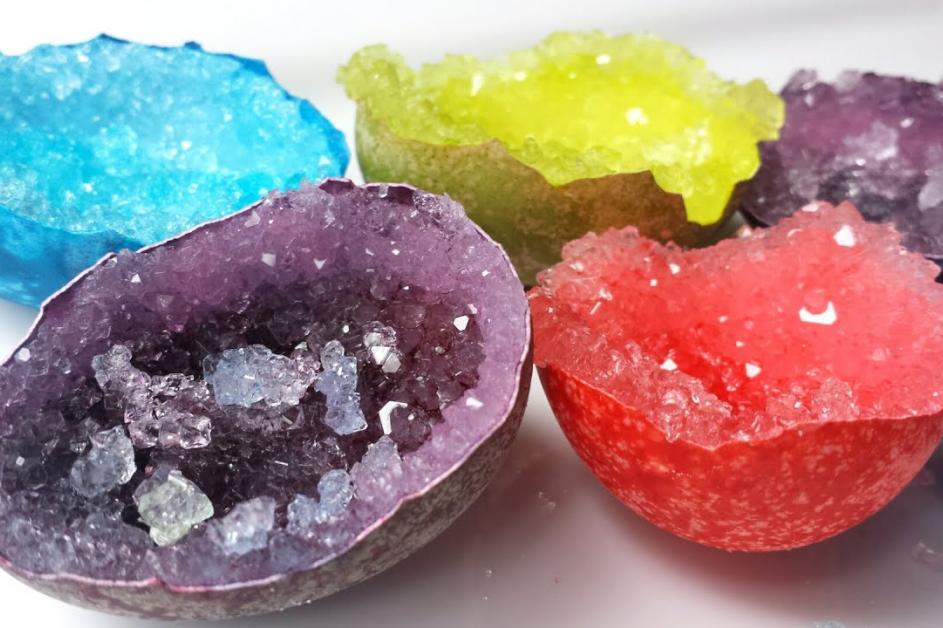
Have a-rocking' good time as you celebrate Easter this week. Thanks to a few common household ingredients, some ingenuity and the Environmental Education Center’s guide this classic science experiment for kids makes for an egg-citing day.
Grow-your-own geode as you learn the process of crystallization.
What You’ll Need
- Plastic Easter Eggs
- Elmer’s White Glue
- 8 oz. Mason Jars
- Tablespoon
- Borax
- Paint Brushes
- Egg Carton Holder
- Spoon to Stir
- Bowl
- Boiling Water (Electric Kettle)
- Safety Goggles
- Gloves
Day 1: Prep
- Lightly coat each egg with glue
- Pour borax into bowl and roll glue coated eggs in borax until covered
- Set coated eggs in the carton to dry overnight
Day 2:
- Boil water
- Fill Mason jars halfway when water is ready
- Add food coloring to each jar
- Pour 2 tablespoons of the powder into each jar
- Stir until the powder has dissolved (may look cloudy that’s ok)
- Slowly drop in coated egg into Mason jar and seal (you may leave the jar open to watch the crystals grow)
- Check jar in 2-3 hours to see if crystals have grown, be patient crystallization could take up to six hours
The Science
What is a geode?
A hard rock that contains a hollow cavity lined with crystals.
How does a geode form?
It can happen several ways but it starts when a cavity forms in a rock. Cavities are most common in the igneous rock created by cooling lava or magma. Usually, this happens when a bubble of carbon dioxide and water vapor forms inflows of lava. A cavity can also form when lava solidifies underwater. In sedimentary rocks (limestone or sandstone) the cavity in these rocks is usually formed from a solid core. A mass of minerals, in the sediment, may begin to dissolve and leave space behind. Geodes may appear solid but, they are porous— but you would need a microscope to see the small pores The next step and most important step for a geode to occur for both igneous and sedimentary geodes are for mineral-rich groundwater or rainwater to seep through the porous rock and fill the cavity. As the water flows through and inside the geode, additional mineral layers are deposited in its hollow interior.
How long does it take for a geode to form?
Over thousands of years, these layers of minerals build crystals that eventually fill the cavity. How long this takes depends on the size of the geode. The largest crystals can take a million years to grow!
Fun Fact: Quartz crystals are most common in igneous geodes. Silica is more common in geodes that form in sediment.



